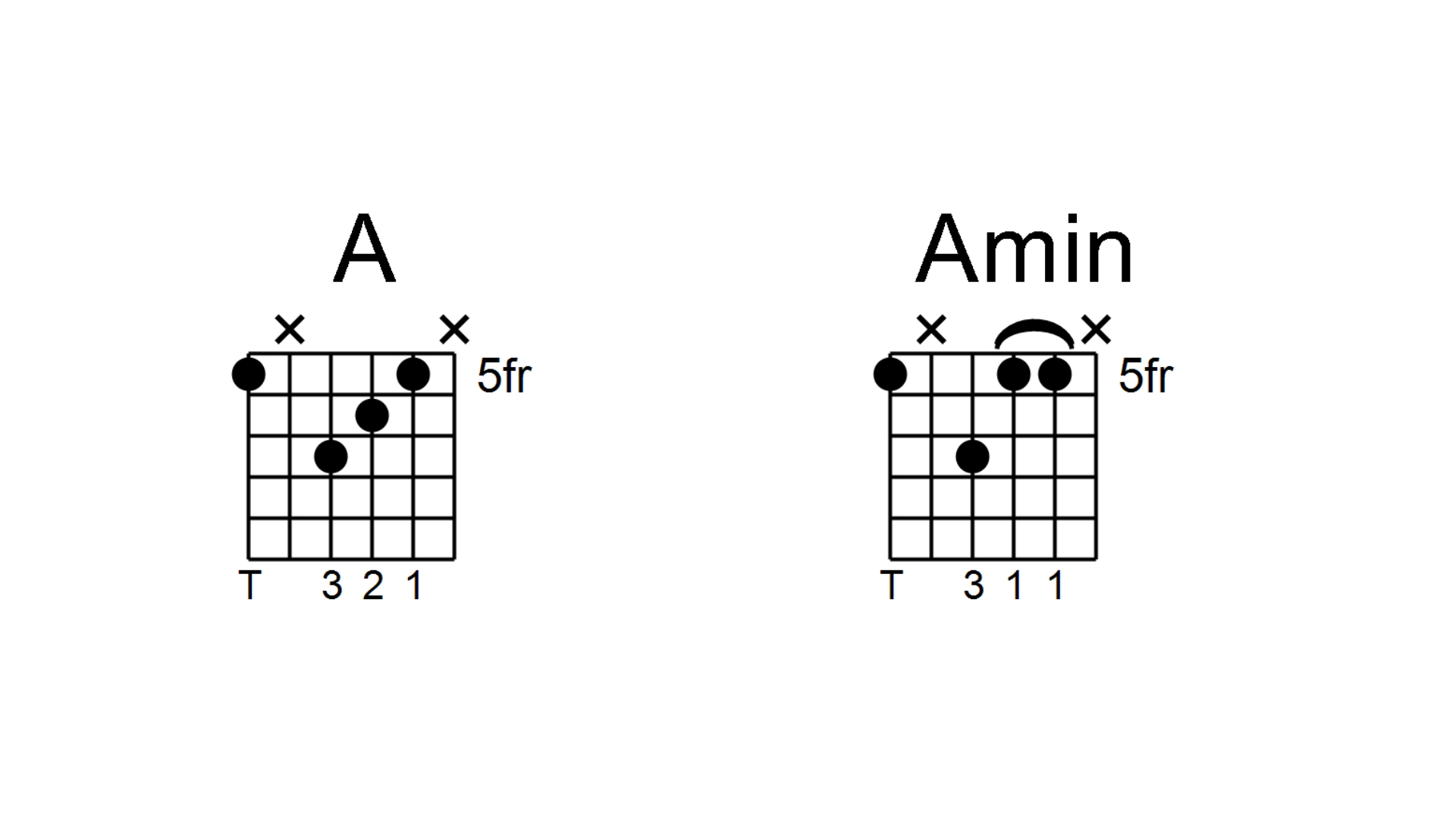7 simple chord tricks to make you a better guitar player
Teacher Leigh Fuge shows how to improve your chord skills

If you’re at a stage in your playing journey where you find yourself fed up of how your chords and rhythm work sound, don’t worry. We all hit this ceiling at some stage in our playing journey.
Rhythm guitar, and chord work, is vastly underutilised. We as guitar players tend to gravitate towards learning and focusing on the really flashy stuff rather than nailing our core rhythm skills that we'll end up using far more.
In this lesson we’re going to check out seven chord tricks that will make your rhythm playing more fun, interesting and creative.
1. Learn the CAGED system
The CAGED system is a simple music concept that allows you to play any major chord with just 5 existing chord shapes. The chord shapes are C, A, G, E and D.

You can move these chords to different root note positions and using a barring technique you can play any major chord anywhere on the guitar.
You may recognise the A and E forms of the CAGED system as your existing 5 and 6 string barre chords. The C, G and D forms are slightly trickier but do offer you a bunch of new ways to play chords in different places on the neck.
A great exercise you can use to help learn the CAGED system is to take each letter of the CAGED system and play that chord in all 5 positions, like so:
Want all the hottest music and gear news, reviews, deals, features and more, direct to your inbox? Sign up here.

Try this with A, G, E and D chords.
More: Use the CAGED system to discover major and minor chords in this guitar lesson
2. Alternate between bass and treble strings
If you find yourself playing strumming patterns that don’t inspire you and feel rigid and stuff, you can try splitting the chord up into two segments… bass notes and treble notes. This will break up the sound of your chords and give you a bit more flexibility in how you can strum.
You can alternate between the lower notes and higher notes of a chord but don’t worry too much about it being really regimented. You want it to be loose to achieve a natural sound.
3. Add a 5th in the Bass
Adding a 5th in the bass is a great way to fatten up an existing open chord. In this example we’ll add a 5th to a C, D and F major chord.
In the C chord, you’re adding a G in the bass, in the D chord an A goes into the bass and in the F chord a C goes into the bass.

This lower 5th gives the chord a fuller, richer sound. It turns the chords into different inversions, so they’ll be written as slash chords. The note to the left of the slash is the chord and the note to the right is the lowest note you’re hearing.
Learn more: Try these 5 inspiring slash guitar chords to learn
4. Sliding chords
If you’re looking for a way to break up a boring rhythm, especially if you’re playing barre chords in a funk style, dropping the chord by a semi-tone and sliding up to your target is a great way to add some interest to your chord pattern.
This works great in a funk context with shorter triad-style chords, or chords like the Dom9 as seen in the video. Start the chord one fret lower than where it needs to be and immediately slide it to the target fret on the beat.
5. Thumb and triad chords
You can use this Jimi Hendrix / John Mayer style approach to chords to free up some sonic space in your progressions by removing duplicate notes from the chord.
We’re going to break down major and minor chords into simple triad and thumb chords.

To do this you take your regular six-string major and minor barre chords and strip out the notes on the A string and the E string.
This means you’ll be playing a simple triad on the D, G and B strings, and the root note on the Low E with your thumb. This approach to chords frees up your little finger to add some chord embellishments (See Trick 7 for more on that).
Learn more: Play better barre chords in 20 minutes with this guitar lesson
6. Hammer-on the major 3rd
This is a cool trick you can use in a 12-bar blues progression to spice up your blues riffs. Taking a minor chord (In this example, an Am7 played in the thumb and triad style) and hammering onto the major 3rd of the chord, creates a Dominant 7 style sound. This allows you to add a major flavour to a minor blues riff.
This also means, when you’re hitting that Dom7 sound, you can throw in some major pentatonic licks over the top for some extra excitement.

You can use this to your own rhythm or stick to a common shuffle style rhythm. Check out the related timestamp in the video and see how you can mix this with alternating bass notes for an even more interesting take on the chord.
7. Embellishing chords
Once you nail your triad-style voicings, you can use your little finger to add some extra notes and embellishments to your chords in a very Hendrix style way.
To do this, you need to visualise scales over the chords as shown in the video above. Over the major chords, you’ll be visualising a major pentatonic scale, and over the minor chords you’ll be visualising a minor pentatonic scale.
The major chord shape fits inside of the major pentatonic scale, so you can see which notes from the scale you can add to create different extensions and melodic movements. The same is true for the minor chords.
Don’t worry if you don’t know what the exact chord extensions are, as long as you’re playing within the scale pattern, the notes will work with the chord.
This can be a very tricky technique to work with, but start off slow and pick a single note and get used to adding that in and out with some groove, then start to work up to more complex melodic embellishments inside your chord work.
Learn the ultimate Jimi Hendrix rhythm guitar chord lesson
Leigh Fuge is a guitar player and content creator with a love for all things '80s. When he’s not creating gear demos for his Youtube channel he’s teaching students via his online guitar course Right Notes Music Tuition. Off camera he spends most of his time travelling around the UK performing at functions and corporate events. www.instagram.com/leighfugeguitar
